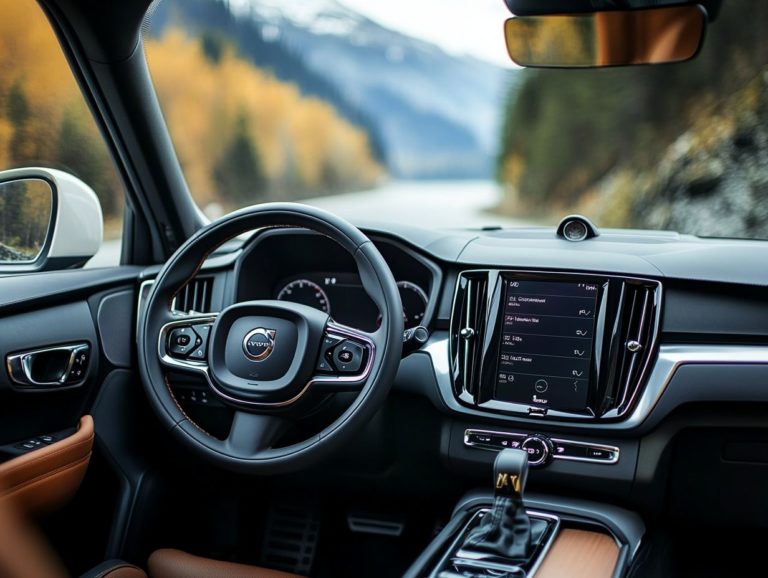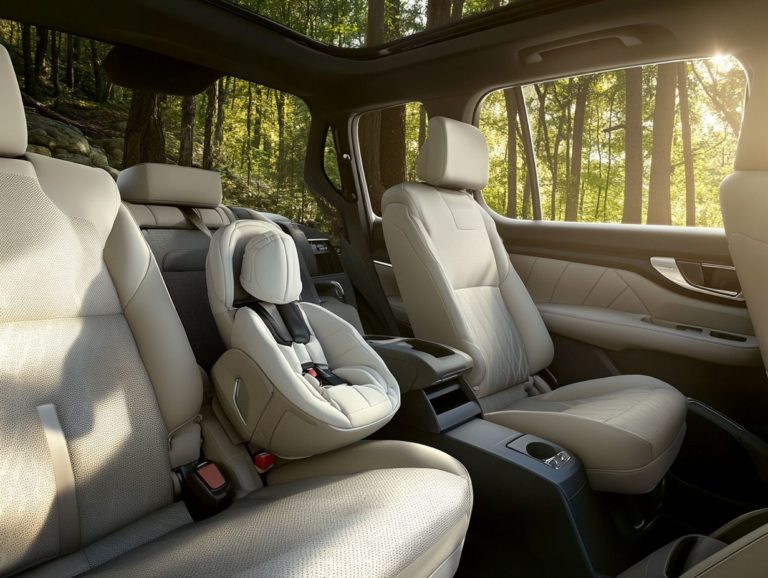Crossover vs. SUV: What’s the Difference?
In today s automotive landscape, crossovers and SUVs have emerged as the preferred options for many drivers. However, they each offer unique benefits. Understanding the key differences between the two is essential for making an informed decision.
This article provides a comprehensive breakdown of everything you need to know from performance and handling to interior space and design. It delves into fuel efficiency and costs, explores safety features, and helps you determine which vehicle aligns best with your lifestyle.
Whether you live in the heart of the city or seek adventure beyond the pavement, you ll find valuable insights to help you choose the perfect ride.
Contents
- Key Takeaways:
- Overview of Crossovers and SUVs
- Performance and Handling
- Interior Space and Design
- Fuel Efficiency and Cost
- Safety Features
- Best Uses for Crossovers and SUVs
- Frequently Asked Questions
- What is the difference between a crossover and an SUV?
- Are crossovers and SUVs the same size?
- Which is better for families: a crossover or an SUV?
- Do crossovers and SUVs have different driving capabilities?
- Are crossovers more fuel-efficient than SUVs?
- Which is better for city driving: a crossover or an SUV?
Key Takeaways:
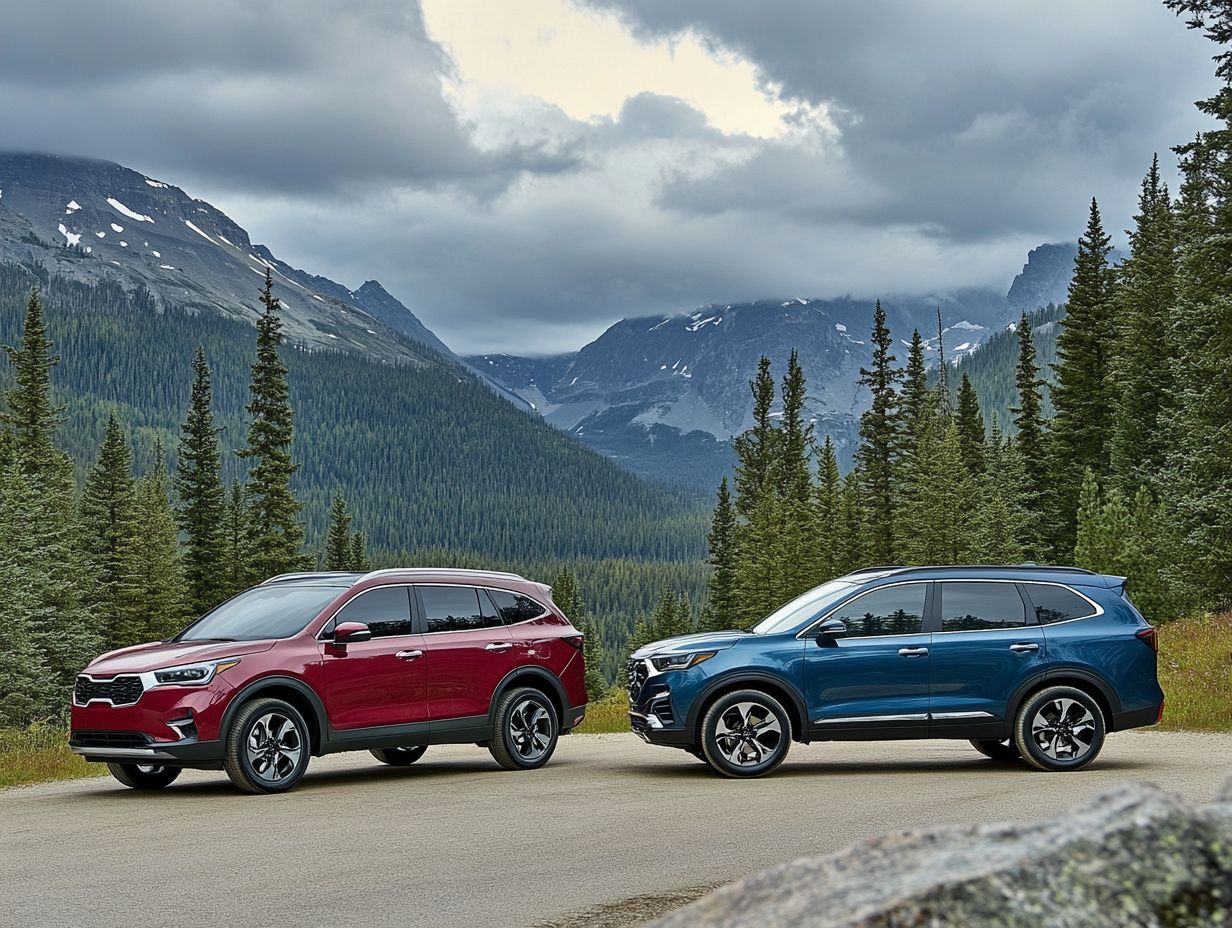
- Crossovers and SUVs have similar features, but key differences in performance, interior space, fuel efficiency, and safety make them distinct vehicle options.
- Crossovers offer a smoother driving experience, while SUVs excel in off-road capabilities and towing how much weight a vehicle can pull behind it.
- When choosing between a crossover and SUV, consider your specific needs to determine which vehicle is the best fit for you.
Overview of Crossovers and SUVs
Explore the thrilling world of automotive choices! Grasping the distinctions between crossovers and SUVs is essential for making an informed vehicle choice that aligns with your needs.
These multi-passenger vehicles cater to different demographics and driving preferences. SUVs, like the Chevrolet Suburban and Ford F-150, are built for robust off-road capabilities. In contrast, crossovers, such as the Toyota Highlander and Nissan Rogue, prioritize comfort and better fuel economy.
This guide will explore the key features, performance metrics, and market share of these two popular vehicle categories, ensuring you re equipped with the knowledge to choose wisely.
Definition and Key Differences
An SUV typically refers to a vehicle built on a truck chassis, while a crossover features a unibody design that blends the best characteristics of cars and SUVs.
This structural difference significantly impacts your driving experience, performance, and overall utility. Popular SUVs like the Ford Explorer and Chevrolet Tahoe boast rugged builds and off-road capabilities, making them perfect companions for heavy-duty adventures.
On the other hand, crossovers like the Honda CR-V and Toyota RAV4 focus on comfort and fuel efficiency, making them excellent choices for daily commutes and family getaways.
The truck-like structure of SUVs allows for higher towing capacities and enhanced durability on rough terrains. Meanwhile, the lightweight unibody architecture of crossovers provides superior handling and ride quality, ideal for urban environments.
Performance and Handling
In terms of performance and handling, SUVs and crossovers present unique advantages tailored to your driving preferences. For example, the Jeep Wrangler stands out with exceptional off-road capabilities, perfect for those who crave adventure beyond the pavement. Meanwhile, crossovers like the Ford Explorer deliver a refined and smooth driving experience, ideal for long highway journeys.
Each option caters to different aspects of your driving lifestyle, ensuring you find the perfect fit for your needs.
Comparison of Driving Experience
The driving experience between an SUV and a crossover can be quite distinct. SUVs often deliver a rugged, adventurous feel, while crossovers prioritize comfort and agility in urban settings. For a detailed look at their differences, check out this feature comparison of SUVs vs. crossovers.
This difference is particularly clear when examining elements like suspension systems and ride height. SUVs excel in off-road scenarios, providing a robust and powerful ride that tackles various terrains with confidence. In contrast, crossovers are designed with urban driving in mind, offering a smoother ride and a quieter cabin that makes city commutes more enjoyable.
When navigating narrow city streets, the compact dimensions and improved visibility of crossovers create a more effortless driving experience. Meanwhile, SUVs, while commanding attention on the road, may require more skill for parking and maneuvering in busy areas.
Interior Space and Design
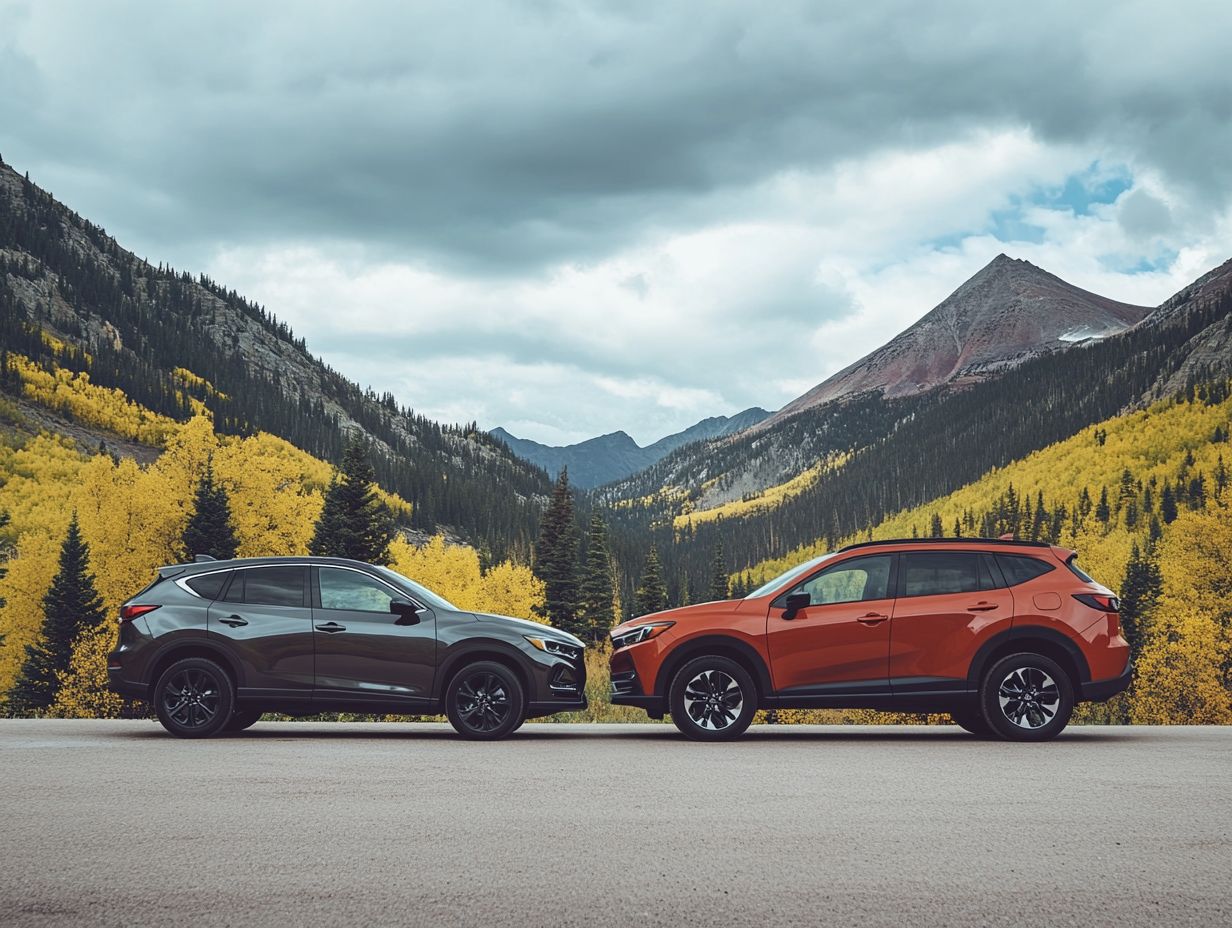
When considering your options between crossovers and SUVs, interior space and design are essential elements in your decision-making process.
Models such as the Toyota RAV4 and Kia Sorento stand out with their generous interiors. Their versatility caters to both families and individuals.
Seating Capacity and Cargo Room
SUVs usually cater to larger families due to their spacious interiors, as seen in vehicles like the Toyota Sequoia. Crossovers, such as the Honda CR-V, excel in utilizing space efficiently for everyday needs.
For example, the Toyota Sequoia can comfortably accommodate up to eight passengers. This makes it perfect for family road trips or transporting groups.
Additionally, it offers significant cargo space behind its third row for all your gear and luggage.
On the other hand, crossovers like the Honda CR-V shine in versatility. They feature adjustable rear seats that create an impressive cargo area of up to 75.8 cubic feet when folded down. This makes them ideal for urban living, serving as both a family vehicle and a reliable companion for grocery runs or weekend getaways.
Fuel Efficiency and Cost
Fuel efficiency and cost are important factors that shape your decision between SUVs and crossovers. Generally, you’ll find that crossovers offer superior fuel economy compared to traditional SUVs, like the Chevy Tahoe and Ford F-150, which typically entail higher operating costs.
Comparison of Mileage and Expenses
Crossovers often shine with their impressive fuel economy. They present a more budget-friendly choice compared to gas-guzzling SUVs, which can lead to higher overall operating costs.
On average, crossovers deliver around 25-30 miles per gallon, while many traditional SUVs hover around 15-20 miles per gallon. This discrepancy influences how frequently you ll need to refuel and impacts your monthly fuel budget.
Moreover, with their lower emissions, crossovers contribute to a smaller carbon footprint, appealing to environmentally conscious buyers.
While crossovers offer efficiency, it’s crucial to weigh the trade-offs in space and capability. If you crave adventure, SUVs offer incredible towing power for all your outdoor escapades!
Safety Features
Safety features hold immense importance in the automotive industry. Both SUVs and crossovers have made remarkable strides in safety technology. Models like the Ford Explorer and Subaru Outback showcase impressive safety ratings that reflect their commitment to keeping you and your loved ones secure on the road.
Key Safety Technologies and Ratings
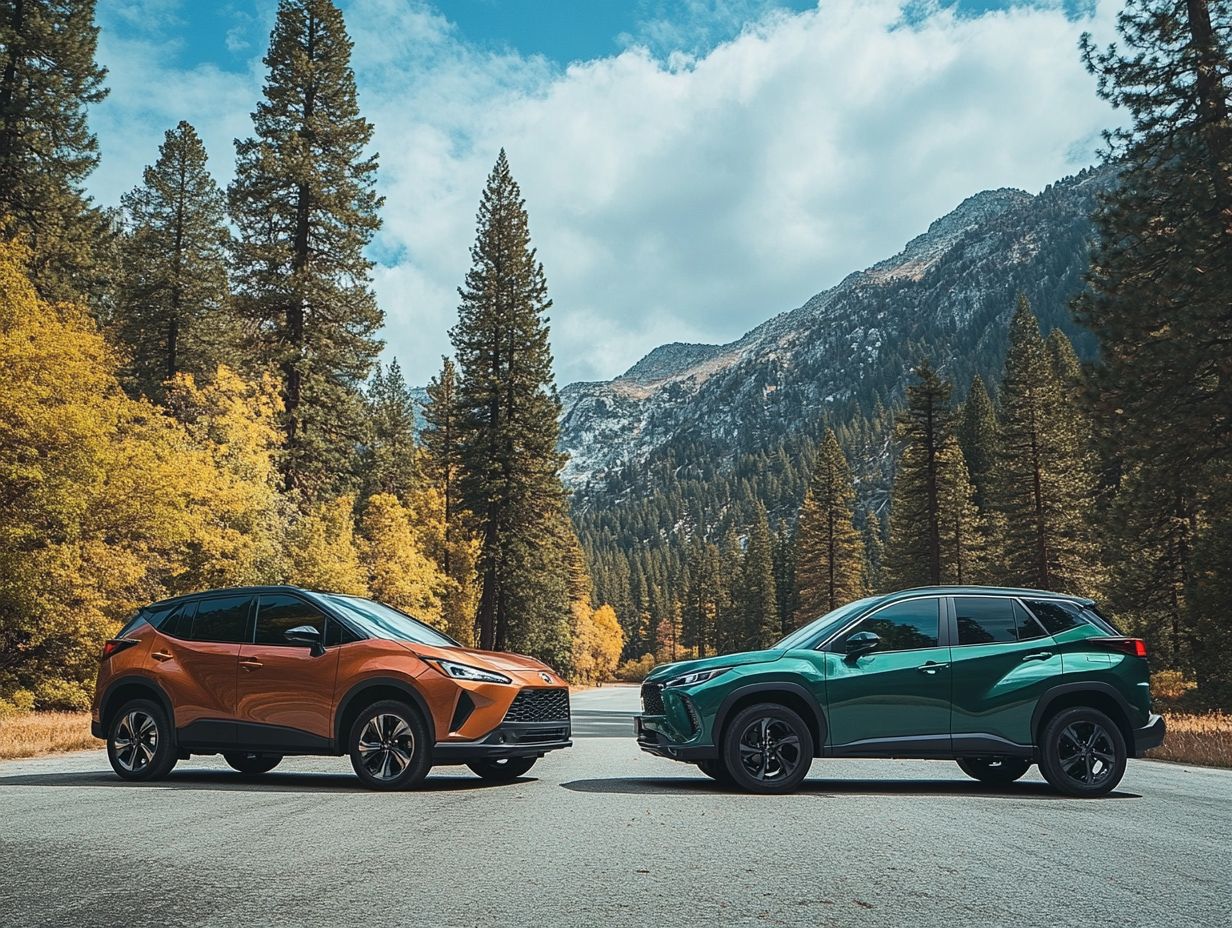
Key safety technologies in modern SUVs and crossovers include advanced collision avoidance systems, adaptive cruise control, and comprehensive safety ratings derived from rigorous crash tests.
These features enhance your driving experience, especially in urban environments where sudden stops are part of daily life. For instance, collision avoidance systems use sensors and cameras to detect obstacles, automatically applying brakes if a potential accident looms.
Adaptive cruise control helps maintain a safe distance from the car ahead by adjusting your speed automatically, significantly lowering the risk of rear-end collisions. Safety ratings, assessed by organizations like the National Highway Traffic Safety Administration, provide valuable insights into a vehicle’s performance in crash tests.
Combined, these technologies play a substantial role in reducing accident rates, making SUVs and crossovers some of the safest options available on the road today.
Best Uses for Crossovers and SUVs
Knowing how to use crossovers and SUVs is key to making the right choice. For instance, the Hyundai Santa Fe is perfect for urban commuting, offering both style and practicality.
The Ford Explorer, however, excels in off-road adventures and is great for family journeys. By understanding these differences, you can pick the vehicle that fits your lifestyle and needs.
Which Vehicle is Best for Your Needs?
Finding the right vehicle means looking closely at your lifestyle and driving habits. Compare SUVs and crossovers to see which one offers the best benefits for you.
Think about important factors like passenger capacity, cargo space, fuel efficiency, and the terrains you ll be driving on.
SUVs usually have strong off-road capabilities and greater towing capacity. Crossovers often excel in urban areas, providing better maneuverability and fuel efficiency, which suits daily commuting well.
Reflect on your daily routines and family size. This will help you find the vehicle that truly meets your needs.
Frequently Asked Questions
What is the difference between a crossover and an SUV?
Crossovers and SUVs may look similar, but they are different. Crossovers have a unibody design like a sedan, while SUVs have a body-on-frame structure like a truck.
SUVs generally offer better off-road capabilities. Crossovers, on the other hand, are built for smooth on-road driving.
Are crossovers and SUVs the same size?
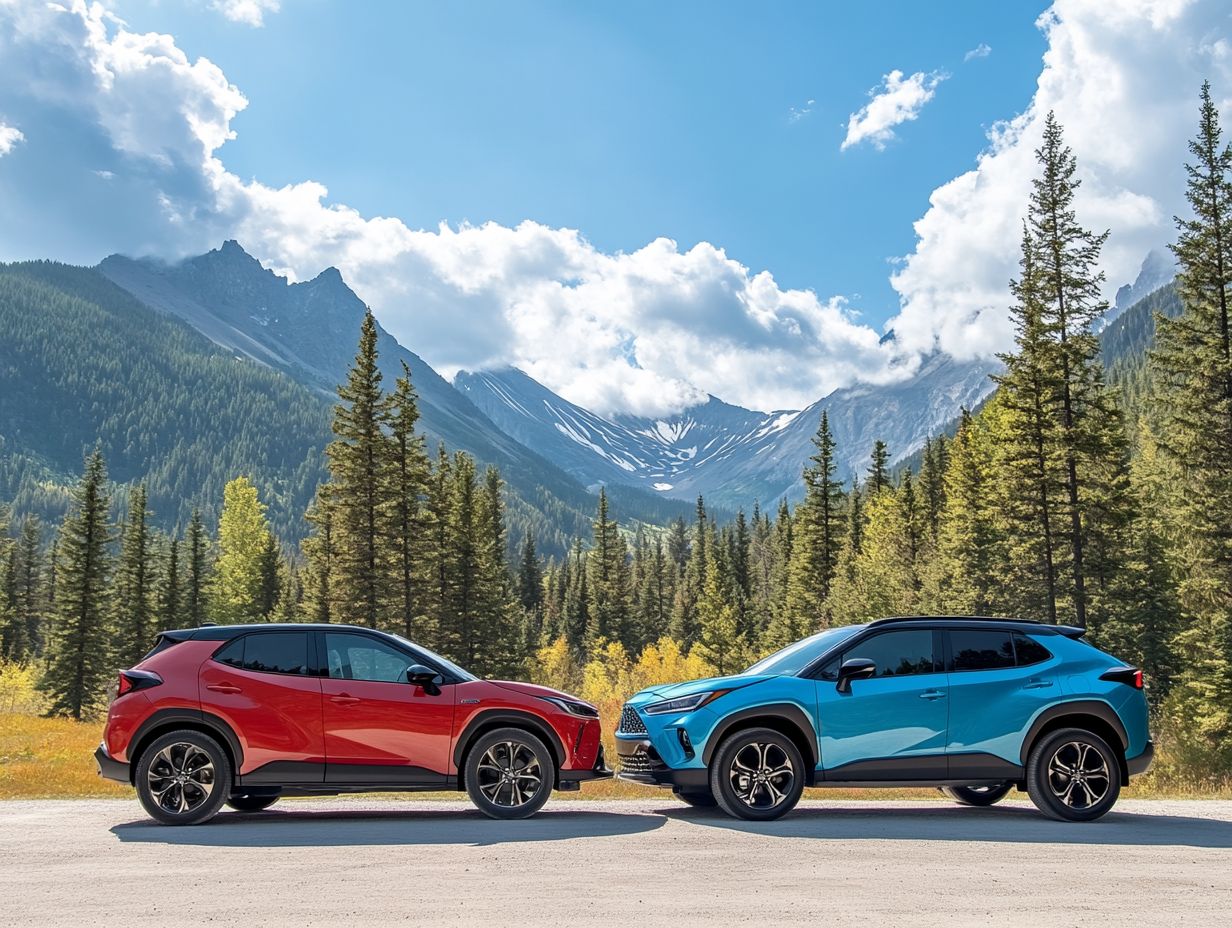
Not really. Crossovers can be small or mid-size, while SUVs range from mid-size to large. Some crossovers can actually be larger than certain SUVs, so size can be misleading.
Which is better for families: a crossover or an SUV?
Your choice depends on your specific needs. Crossovers often provide a comfortable and fuel-efficient ride, making them popular among families.
However, SUVs may offer more interior space and towing capacity, which is helpful for larger families or outdoor enthusiasts.
Do crossovers and SUVs have different driving capabilities?
Yes, they do. Crossovers are designed for smooth driving on roads and usually have lower ground clearance.
SUVs, however, feature higher ground clearance and are built for more rugged off-road conditions.
Are crossovers more fuel-efficient than SUVs?
Typically, crossovers are more fuel-efficient. Their lighter weight and aerodynamic design make them better on the road.
That said, you can still find fuel-efficient SUV options available today.
Which is better for city driving: a crossover or an SUV?
This depends on your preferences. Crossovers are generally easier to maneuver and park, making them ideal for city driving.
However, some SUVs are designed for urban use and may include features like a smaller turning radius for better city navigation.

